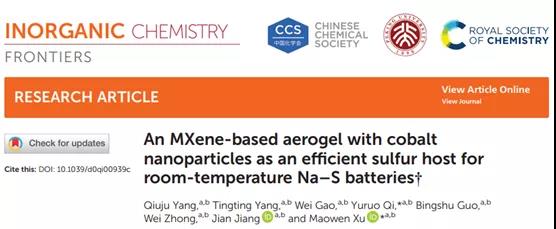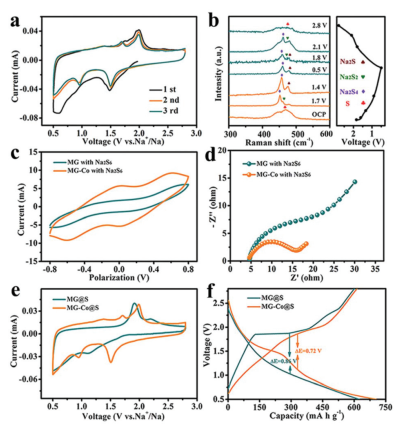
hotline:
17715390137
Tel/Wechat:
18101240246 (Technology)
0512-68565571
Email:mxenes@163.com (Sales Engineer)bkxc.bonnie@gmail.com
Scan the code to follow or search the official account on WeChat:
2D Materials Fronrier After paying attention,
click on the lower right corner to contact us,
Enter enterprise WeChat.
Professional Services Online



Rechargeable lithium ion batteries are widely used in electronic devices and electric vehicles due to their high energy/power density. However, considering the shortage of lithium resources and the unbalanced distribution in the world, the application of lithium electricity in large-scale energy storage system is greatly limited. Room temperature NA-S batteries have attracted the attention of many researchers because of their low cost, abundant resources (both sodium and sulfur are abundant), and sufficient energy density. However, the development of THE NA-S battery still has a lot of work to do. First and foremost, the uncontrolled shuttle effect of sodium polysulfide (Na2Sx, X in 4~8) results in low sulfur utilization and irreversible capacity attenuation.

Recently, MXenes, as a new class of two-dimensional materials, has received extensive attention in many applications, especially in the field of energy storage, due to its unique layered structure and electronic properties. In particular, Ti3C2Tx, as a kind of MXene material with the most in-depth research, is a potential sulfur host. However, strong interlamellae van der Waals contact leads to heavy stacking of the nanosheets, which in turn leads to lower specific surface area, reduced space, and limited ion transfer, increasing internal resistance. GO has a large specific surface area. By combining Ti3C2Tx with GO, 3D porous aerogels can be prepared, which can have sufficient pore structure, high specific surface area and redundant active sites to prevent the overflow of active materials. To date, however, Mxene-based aerogels have not been used in room temperature NA-S batteries.


FIG. 1. Principle of inhibiting shuttle effect during charging and discharging of mG-CO-S complex.

FIG. 2. Micro morphology and physical characterization of MG-CO.

FIG. 3. Micromorphology and physical characterization of mG-CO-S complex.

FIG. 4. Electrochemical performance test of MG-CO@s in room temperature NA-S cells.

FIG. 5. The CV and in situ Raman spectra of mG-CO@s electrode and the torsion diagram of symmetric devices; CV and GCD images of mG-S and MG-CO-S asymmetric devices.

In this paper, the 3D porous MG-CO aerogel prepared has a three-dimensional porous structure, which can not only improve the electrical conductivity, but also alleviate the volume expansion during charging and discharging. At the same time, the polar active surface of Ti3C2Tx and the catalytic effect of Co nanoparticles can effectively achieve uniform shuttle effect and enhance the chemical reactivity of the point. The assembled room temperature NA-S cell has excellent electrochemical performance, with 705 mAh G-1 capacity at the current density of 0.1 C, and 428 mAh G-1 specific capacity when the current density increases to 5 C. The high electrochemical performance of the MG-CO@s electrode proves the importance of this integration strategy.
Literature link:
DOI: 10.1039 / D0QI00939C
Source: MXene Frontie
This information is from the Internet for academic exchange only. If there is any infringement, please contact us to delete it immediately.

| Reminder: Beijing Beike New Material Technology Co., Ltd. supplies products only for scientific research, not for humans |
| All rights reserved © 2019 beijing beike new material Technology Co., Ltd 京ICP备16054715-2号 |